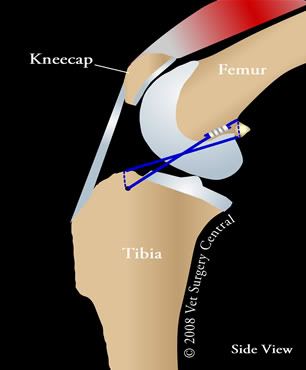What are mast cells?

I believe this is one of the most basic questions one can ask. Mast cells or MC are a specialized cell which is considered to be a component of the immune response system. These cells are characterized by the granules which are formed inside them. In the 1800's, Paul Ehrlick believed the granules were meant for nourishment for the surrounding cell and named them Mastzellen, German for food for cells. These cells are thought to be produced in the bone marrow and circulate through the body in immature form before maturing in a tissue site. While distributed throughout the body, mast cells are predominantly found in the skin, gastrointestinal track, mouth, nose, and mucosa of the lungs.
These cells play a primary roll in inflammation and allergic reactions. Once activated, MC release their granules which contain various chemical messengers such as histamine and heparin. Heparin is an anticoagulant. Histamine dilates post-capillary venules and increases blood vessel permeability which causes heat, edema, and redness. It also irritates nerve endings causing pain and itching. Histamine plays a roll in asthma, eczema, anaphalaxis, and possibly rheumatoid arthritis. As one can assume, too much of these can be responsible for a variety of systemic problems.
What are mast cell tumors?
The simplest definition of a mast cell tumor, or MCT, is a cancerous proliferation of mast cells. The tumor itself is not a debilitation; the effects from the granule release can be. As one can assume, MCT can affect not only the length of life, but the quality of life.
What causes MCT and how can they be prevented?
The causes as well as prevention are unknown.
How can they be identified?
MCT can have a wide variety of appearances which makes visual diagnosis difficult. They are commonly observed as either a solitary mass or a small cluster under the skin. The tumors may appear like a lipoma, be ulcerated, have thickenings, or many other variations. A common trait is their ability to rapidly change size from both small to large and large to small. Without a fine-needle aspiration and/or a biopsy, a definitive diagnosis is not possible. MCT are one of the most common tumors in dogs although they are not common in cats and quite rare in humans.
Where are they located?
Mast cell tumors can be located in the places MC inhabit. The most common locations tend to be the skin, spleen, liver, and bone marrow. In dogs, almost half of all MCT are on the body trunk, near 40% are on the extremities (hind legs especially), and around 10% around the head and neck. Around 11% of MCT occur in multiple regions.
What dog breeds are commonly affected?
Beagle, Boston Terrier, Boxer, Bulldog, Bullmastif, Bull Terrier, Dachshund, English Setter, Fox Terriers, Golden Retrievers, Labrador Retriever, Schnauzers, Staffordshire Terriers, and Weimeraner. All dogs can get MCT and Boxers are the most affected.
What are the symptoms?
MCT can also have a variety of symptoms. The most common being the tumor itself. There is a possibility for them to be painful, especially if ulcerated, although usually they are not. Mast cell tumors are unique in that they can rapidly change in size. MCT tend to be locally invasive. Another property MCT can have is swelling, redness, itching and even hives, after palpation or aspiration of the tumors. Mast cell cancer can cause systemic symptoms such as diarrhea, appetite loss, abdominal pain, itching, vomitting, darkened feces, lethargy, coughing, labored breathing, enlarged lymph nodes, etc etc.
How is it diagnosed?
MCT are diagnosed through fine-needle aspiration, biopsy, biochemical profiles, and urinalysis. Once diagnosed there is histological grading and clinical staging to be done. There are three grades and they are based on differentiation of the cells, how quickly it divides, and how invasive to the surrounding tissues. The grade is determined by a pathologist who does staining on the tissues. Good differentiation is grade 1, moderate is grade 2, and poor is grade 3. The process for staging is a bit longer. Lymph cells should be taken from the surrounding regional lymph nodes, thorax radiographs, abdominal radiographs and ultrasound is needed to look for enlarged lymph nodes in the spleen and liver especially. There should also be an assessment of the bone marrow and blood for abnormal mast cell circulation. Staging is to determine the degree of spread throughout the body. Stage 1 implies clean margins,single tumors and no signs of spreading and stage 3 would be dirty, invasive margins, more than one tumor and systemic spreading/
What is the prognosis?
The prognosis is highly variable with MCT. Even though Boxers are more prone to MCT, their tumors are usually less malignant. Usually a dog with systemic symptoms/diagnosis and tumor reoccurance there is a poor prognosis. If a dog is tumor free after removal for 6+ months then the prognosis is usually very good. If the tumors spread to multiple regions the prognosis is poorer. If the tumor does not change size for many months it is usually benign.
What is the best treatment?
Treatment again, varies with each case. Most common treatment is surgical mast cell tumor removal with wide margins compared to other tumor removals. Other treatments include the use of prednisone, radiation, chemotherapy and medications for systemic symptoms. Sometimes the cancer is not curable and the dog must just be made comfortable. Ultimately, treatment is to be determined by a collaboration of a licensed vet and the owner...not a blog post. :)
Other sites for information:
http://www.vetmed.wsu.edu/deptsOncology/owners/mastCell.aspx
http://www.marvistavet.com/html/body_mast_cell_tumors.html
http://www.vrcc.com/disease_mc_tumors.shtml
http://www.caninecancerawareness.org/CanineCancerMastCell.html
http://www.kateconnick.com/library/mastcelltumor.html











